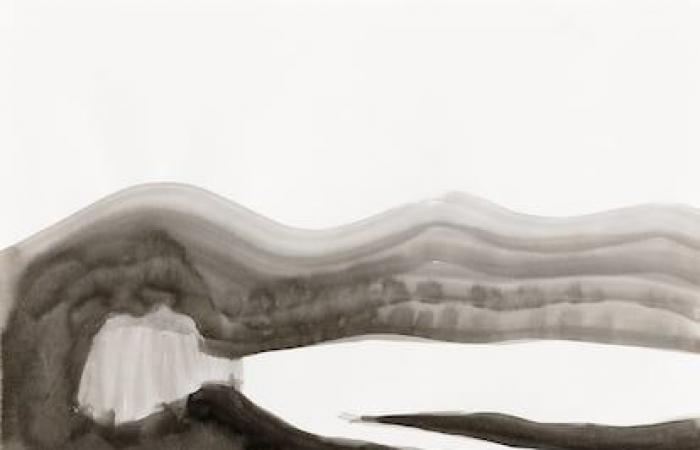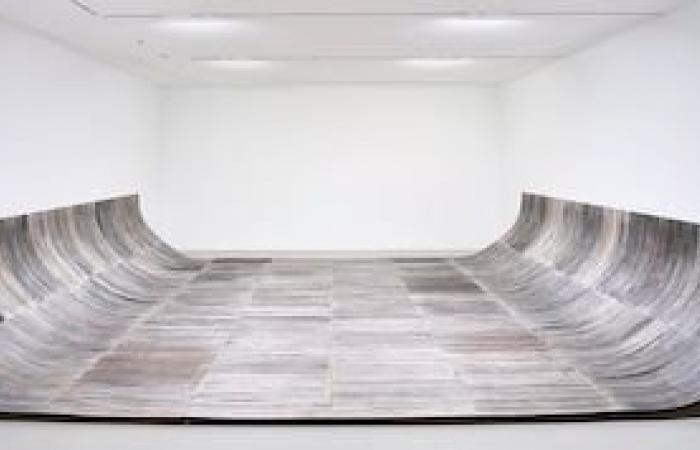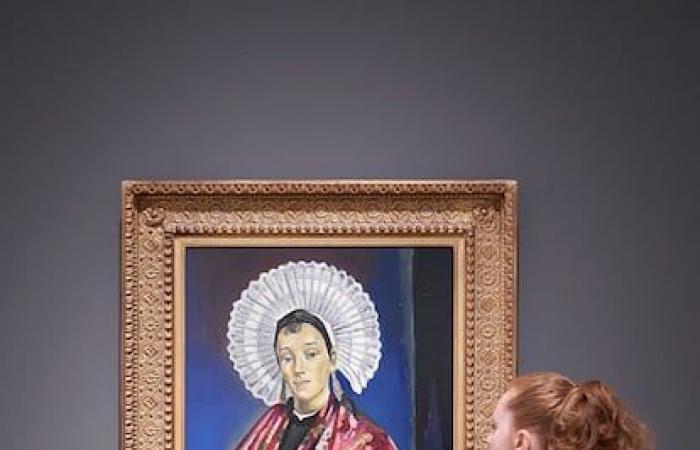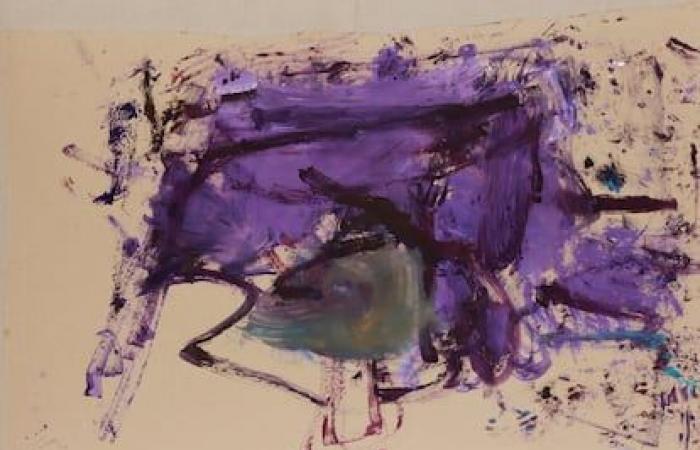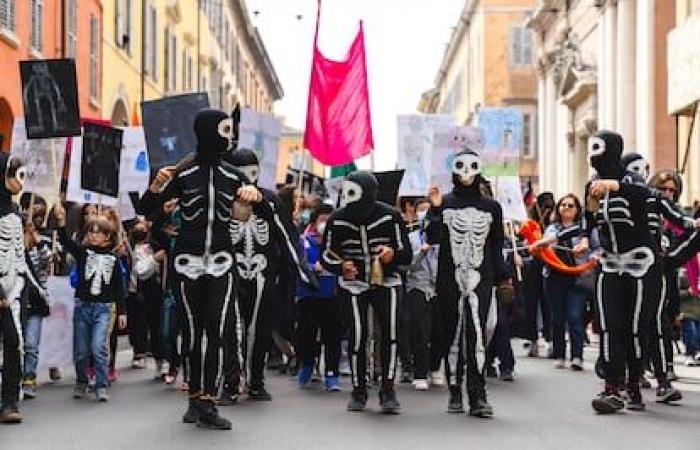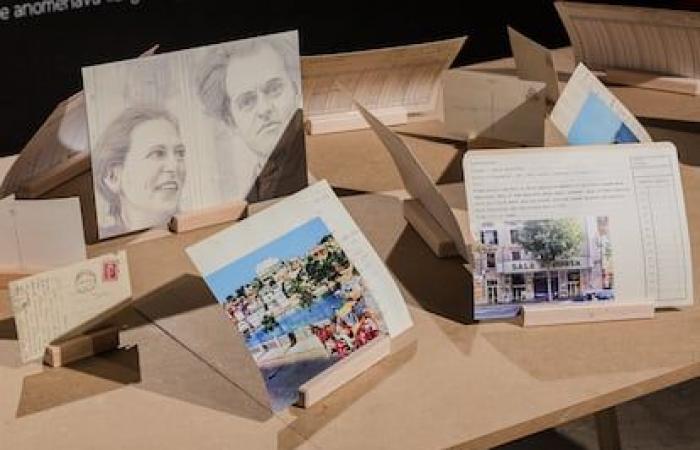Andy Warhol
Warhol & Vijande, meeting in Madrid
Lázaro Galdiano Museum. Madrid. Until July 25.
An eighties bus pass from the Madrid EMT signed by Andy Warhol: can there be a thing that is at the same time more outrageous, more coolfurther cutrelux? Light between memorabilia of this very memorable chamber exhibition. Commemorates Warhol’s legendary visit to Madrid in 1983 to inaugurate the exhibition Guns, Knives and Crosses in the Fernando Vijande gallery: a little piece of microhistory that is also part of History with capital letters, because it symbolically signaled, as much as the entry into the EEC or the first socialist Government, the profound change of a Spain that shook off its dandruff after four decades of Francoism.
Warhol must have signed the bus pass to some fatal fan during the grand press conference he gave at the gallery, an old garage converted into a museum in the Salamanca district that had opened with an exhibition of the Costus. Along with the exhibition of Juana de Aizpuru and La Máquina Española, it served as a dial for the new artistic modernity that was being tested in Spain, after the time of corduroy jackets, moustaches and protest songs had passed. “More Bowie than Brel, more Duchamp than Picasso, more Deleuze than Freud,” as Armando Montesinos, who worked at the gallery at the time, sums it up.
Vijande did things well: he agreed with Warhol on the Madrid visit and the exhibition of new works, no rehashes, and he promised to sell or keep all those serigraphs of weapons and crosses that at the same time invoked and parodied the eternal essences of the Spanish movement. (the knives, the crucifixes) with a joke that the young eighties and the Almodóvar of the first films also practiced. There is one hanging that the Reina Sofía preserves, and her portrait by Warhol, but the most juicy of course is the recovered oral mythology (the interview with Pitita Ridruejo, the Hachuel or Manolín March festivals with the most grandiose of the Madrid backfire and that still today they are remembered) and the period photos: the fauna of Miguel Trillo’s Rock-Ola or those of Tere Nieto, which document the surreal conjunction of the Warholian silver wig in front of the rancid Alcázar of Toledo. Thank goodness she did them: they confirm 40 years later that it was not a mirage. Javier Montes
More information: The day Warhol brought modernity to Spain: “It was as if God had visited us”
Silvia Bächli: Sheet Music
Botín Centre. Santander. Until 20 October.
A score in eight movements in exhibition format. An artist named Silvia Bächli (Baden, 1956). A museum, the Centro Botín. And a sequence of drawings hung at different heights that, room after room, add meaning in their persistent accumulation.. The result is an excellent exhibition, the first major monographic exhibition of the Swiss author in our country, and full of surprises. For example, the installation You give, which Bächli brought to the Swiss Pavilion at the Venice Biennale in 2009, works on paper with colored surfaces that range from translucent to opaque. Or the mural that he signed with Eric Hattan, next to tables arranged like a puzzle. A manifesto of her way of understanding drawing, full of deviations and displacements, where Bächli is the composer and we, spectators, are the interpreters. BEA MIRROR

Patricia Dauder: Unform
Artium. Victory. Until the 29th of September.
Patience and observation define the roadmap of Dauder (Barcelona, 1973), an artist of radical rigor and resistance. As if she were an ethnologist, her projects focus on the study of the passage of time and the traces that she leaves on natural and emotional landscapes, resulting in works related to remains, erosion and ruins. She draws, films, objects and photographs always open to the processual. Hence the title of this exhibition, full of some of his latest works, but above all of diverse materialities, fortuitous essays and cultural correspondences that speak of a landscape that is more mental than physical, as well as an investigation into the possibilities of seeing and representing beyond the immediate. BE
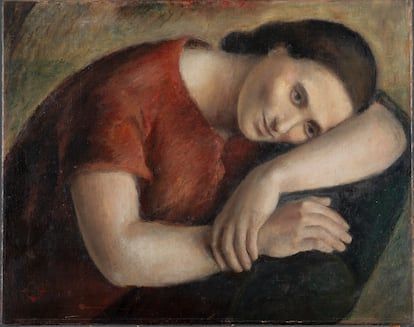
Rosary of Velasco
Thyssen-Bornemisza Museum. Madrid. Until 15 September.
Twitter brought him back to life and now it is in the hands of the public and the institutions to make this resurgence definitive. After a fruitful appeal on networks that led to the location of hundreds of her paintings and drawings, Rosario de Velasco (Madrid, 1904-Barcelona, 1991) stars in a monograph that aims to restore lost time for this painter who triumphed in the 1930s and Then he fell into the black hole of oblivion. Falangist, fervent Catholic and also modern, De Velasco drew from the early Renaissance to create a work based on the robustness of volumes and lines. Her legacy is matched by that of the European artists of the Return to Order, an interwar movement inspired by classical antiquity. SILVIA HERNANDO
More information: Rosario de Velasco, the forgotten painter of ’27, is resurrected at the Thyssen
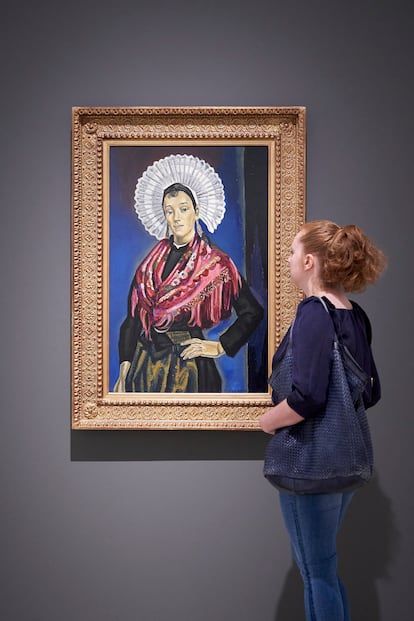
Jesus Dominguez
Maria Blanchard. Painter despite cubism
Picasso Museum Malaga. Until September 29.
María Blanchard (Santander, 1881-Paris, 1932) is considered one of the main representatives of Cubism, that art determined to definitively break with tradition, but, as the title of this retrospective defends, she was a painter despite that trend. Although history insists on remembering her only for that first stretch of her career, which she developed in the Paris of the avant-garde with her friend Juan Gris, she continued creating throughout her life and did so through figuration, addressing concerns unprecedented in her era that are now placed at the center of public debate and restore a validity that should never have been lost: issues such as care, childhood and tenderness. SH
More information: Rescuing the artists of the Spanish avant-garde

Maria Luisa Fernandez
Musac. León. Until October 13th.
María Luisa Fernández began her career in 1979 as one half of the Comité de Vigilancia Artística collective with José Luis Moraza. Some of the ideals they pursued, such as criticism of the art system and interest in what is situated on the margins, are still present in the sculptures and drawings that the artist is now presenting at the MUSAC in León under the title Blood in gold. A forgotten and recently rescued figure of the new Basque sculpture, Fernández returns in this exhibition to some fundamental series of his career to add new layers of interpretation. In essence, this is what his practice has always been about: creating meanings that leave a mark and branch out. SH

Martha Jungwirth
Guggenheim Bilbao. Until September 22.
Despite being one of the protagonists of the particular renaissance of the arts in Vienna after the World War, the artist remains relatively unknown in Spain. Perhaps because of her predilection for drawing? Because of the blurred line between figuration and abstraction? For a defense of color that avoids thematic and stable ascriptions over time? All these questions are today the strong points of the accessible and well-measured retrospective. Throughout her 70 works, it is possible to understand a pictorial vision that records, like a diary, historical events and the artistic canon. Juan Gallego Benoit
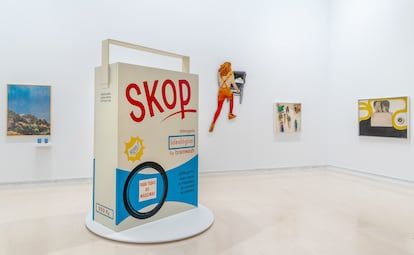
The power with which we jump together
IVAM. Valencia. Until July 21.
The second wave of feminism swept through Europe in the sixties, although it would not arrive in Spain and Portugal, mired in their respective dictatorships, until almost a decade later. The names of women artists began to be heard with great force in these countries, although in many cases critics avoided commenting on the politics of gender in their works and they themselves did not make explicit reference to it. Patricia Mayayo and Giulia Lamoni bring together a large list of artists at the IVAM to demonstrate the relationship that existed in the feminist and artistic processes of both countries, to defend a historical reading typical of southern Europe and to put in context some artists who are already receiving the attention of institutions, such as Eva Lootz, Elena Asins or Aurèlia Muñoz. JGB
More information: To the rescue of the Spanish avant-garde artists

JORDI COLOMER
Jordi Colomer. Photo Festival Future Trusts
MACBA. Barcelona. Until September 23.
He had been on the waiting list for years. The MACBA finally reviews the career of Colomer (Barcelona, 1962), one of our most international artists of recent decades, despite the fact that tributes have not been abundant in Spanish institutions. It is not a typical retrospective, but a chance encounter with his past and present works, which usually oscillate between opposite poles such as reality and illusion, center and periphery, or high and low culture. From his wood, stone and plaster sculptures from the eighties to his videos created collectively in recent years with anonymous citizens, through his experiments with photography, collage or live actions, the exhibition reviews a multiform and uneven production, but always ingenious and relevant. ALEX VICENTE
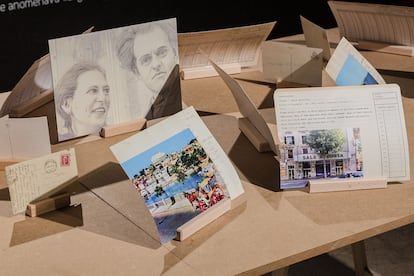
Vacation with Franco. My summers in Franco’s Spain.
Bòlit. Girona. Until October 6th.
In 1951, the millionth tourist landed in Spain, at the same time as the first US ambassador since the Civil War arrived in Madrid. It would be the beginning of an alliance between tourism, dictatorship and capitalism that marked a decisive turn in Spanish history in the 20th century. This exhibition curated by the artist Monika Anselment, a Berliner living on the Costa Brava, traces the Spanish tourist boom with a novel approach. Based on their own documents such as photos and postcards, a series of German artists, from Annette Riemann to Jörg Zimmer, create a visual and conceptual work to return to those years of Franco’s desire to whitewash the regime with sun cream and the beginning of a massive industry that would bring as much wealth as destruction. Happy summer. TO. v.
You can follow Babelia in Facebook and xor sign up here to receive our weekly newsletter.
Subscribe to continue reading
Read without limits
_


